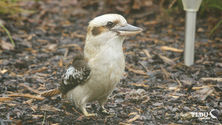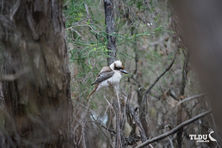
Shoppers Feedback:
Jan 17, 2017
Hello Ros,
I have now paid the invoice, but I would like to write to you just to say a big THANK YOU for getting me the Penguin!
The ChatterMate Penguin became a nice memory for me when I was in New Zealand, and I am so greatful to you for arranging so that I could have it! :-)
Thank you so much!!!!!!!!!!!
Regards,
Malin
Hi Ros,
Many thanks for your very kind email. I really appreciate your prompt reply!
I appreciate your advice regarding the decorations and customs. These are a gift for my daughter’s exchange student family so when she returns home on the weekend I will show her and see if she loves them as much as I do!
Thanks so very much again - I am truly grateful for your kind assistance.
Kind Regards
Bernadette
Ros,
Thanks again for the great customer service. It's a refreshing change!
Best regards,
Trevor
Hey Roz,
Thank you for your emails. Just loved my first order. The cute little Aussie bush critters are going to be used for an office Christmas decoration. My colleagues also liked them and talked about making an order to your site. I'll send you a photo when completed.
I'll be ordering more to send to my daughter's host family in America.
Fabulous service from you.
Kind regards,
Michelle
Thankyou. Order arrived today. One very happy grandson with his new beastly binoculars.
Regards,
Irene
- Home
- Wild Wonders
- Shop
- Aromas of Australia
- Australian Made
- Books
- Book Marks
- Christmas Decoration Sale
- Christmas Decorations
- Clocks
- Drink Holders
- Garden & Outdoor
- Gift Wrapping & Cards
- Home & Giftware
- Jewellery
- Keyrings
- New Products
- Pencils & Pen Holders
- Photo Frames
- Plush Toys
- Plush with Sound
- Sheepskin Rugs
- Stationery
- Stone Carvings
- Toys & Games
- Travel Goods
- Wedding
- Wild Figurines
- Wildlife Safety Products
- Wind Chimes
- Wine Charms
- View All Products
- Wildlife
- Australiana
- Explore
- Contact Us
Laughing Kookaburra

Quick Facts
| Length: | 42 cm |
| Height: | - |
| Weight: | 340 grams |
| Colour: | Off white below, faintly barred with dark brown and brown on the back and wings. The tail is rufous |
| Habitat: | Most areas where there are suitable trees |
| Food: | Insects, worms and crustaceans. Small snakes, mammals, frogs and birds will also be eaten |
| Predators: | - |
| Status: | Not Present in NT. Secure in all other states and territories in Australia |
The Laughing Kookaburra is instantly recognisable in both plumage and voice. It is generally off-white below, faintly barred with dark brown, and brown on the back and wings. The tail is more rufous, broadly barred with black. There is a conspicuous dark brown eye-stripe through the face. It is one of the larger members of the kingfisher family.
Identification may only be confused where the Laughing Kookaburra's range overlaps that of the Blue-winged Kookaburra, in eastern Queensland. The call of the Blue-winged Kookaburra is coarser than that of the Laughing Kookaburra, and ends somewhat abruptly. The Blue-winged Kookaburra lacks the brown eye-stripe, has a blue tail and a large amount of blue in the wing, and has a pale eye.
Laughing Kookaburras are found throughout eastern Australia. They have been introduced to Tasmania, the extreme south-west of Western Australia. Replaced by the Blue-winged Kookaburra in central northern and north-western Australia, with some overlap in Queensland, although this species is more coastal.
The Laughing Kookaburra inhabits most areas where there are suitable trees.
Laughing Kookaburras feed mostly on insects, worms and crustaceans, although small snakes, mammals, frogs and birds may also be eaten. Prey is seized by pouncing from a suitable perch. Small prey is eaten whole, but larger prey is killed by bashing it against the ground or tree branch.
Laughing Kookaburras are believed to pair for life. The nest is a bare chamber in a naturally occurring tree hollow or in a burrow excavated in an arboreal (tree-dwelling) termite mound. Both sexes share the incubation duties and both care for the young. Other Laughing Kookaburras, usually offspring of the previous one to two years, act as 'helpers' during the breeding season. Every bird in the group shares all parenting duties.
The Laughing Kookaburra is not really laughing when it makes its familiar call. The cackle of the Laughing Kookaburra is actually a territorial call to warn other birds to stay away.
Laughing Kookaburras often become quite tame around humans and will readily accept scraps of meat. This 'pre-processed' food is still beaten against a perch before swallowing.
Last Updated: Thursday 18th July, 2013
BirdLife Australia - www.birdlife.org.au
BUSH e-TELEGRAPH
Signup for our monthly newsletter the "e-Telegraph"
Quick Links
Home | The Beginning | About The Land Down Under | Wild Wonders | Advertise on Wild Wonders | Christmas Decoration Sale | Christmas Tree Decorations | Drink Holders | Plush with Sound | Stone Carvings | Wildlife Wine Charms | Freebies | Australian Wildlife | Help Our Wildlife | Australiana | Photo of the Month | Explore The Land Down Under | Contact Us | Legal Notices


